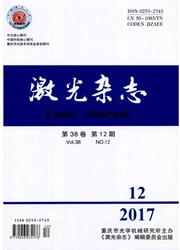

 中文摘要:
中文摘要:
紫外光通信由于可以实现非视距通信方式,全天候全方位工作、抗干扰能力强等特点而逐步变为当前无线光网络的一个研究热点。分析了紫外光非视距通信方式的节点覆盖范围、链路模型以及传输容量;构建了紫外光非视距通信模型,包括传输模型和多收发器节点模型,添加了支持紫外非视距通信的定向静态路由协议;利用建立的模型对紫外光非视距通信的各种方式在不同的拓扑结构下进行了仿真研究。结果表明:紫外光非视距的定向发送定向接收方式能够极大的提高信道的空分复用率,达到最大的网络吞吐量。
 英文摘要:
英文摘要:
Ultraviolet(UV) communication has gradually become a hot research area in wireless optical networks,because of its non-line-of-sight(NLOS) communication mode,working under all-weather and all-direction,strong capability of anti-interference and so on.Firstly,ultraviolet NLOS communication coverage area,link model and transport capacity were analyzed;Then the model of UV NLOS was built,including transmission model and multi-transceiver node model,directional static routing protocol which supported UV NLOS communication was also added;Finally,based on UV NLOS model,various kinds of NLOS working modes were simulated under different topologies.The results show that UV directional transmission and directional receiving communication mode can greatly improve spatial reuse of channel and obtain maximum network throughput.
 同期刊论文项目
同期刊论文项目
 同项目期刊论文
同项目期刊论文
 Multi-channel access technology based on wavelength division multiplexing in wireless UV communicati
Multi-channel access technology based on wavelength division multiplexing in wireless UV communicati 期刊信息
期刊信息
